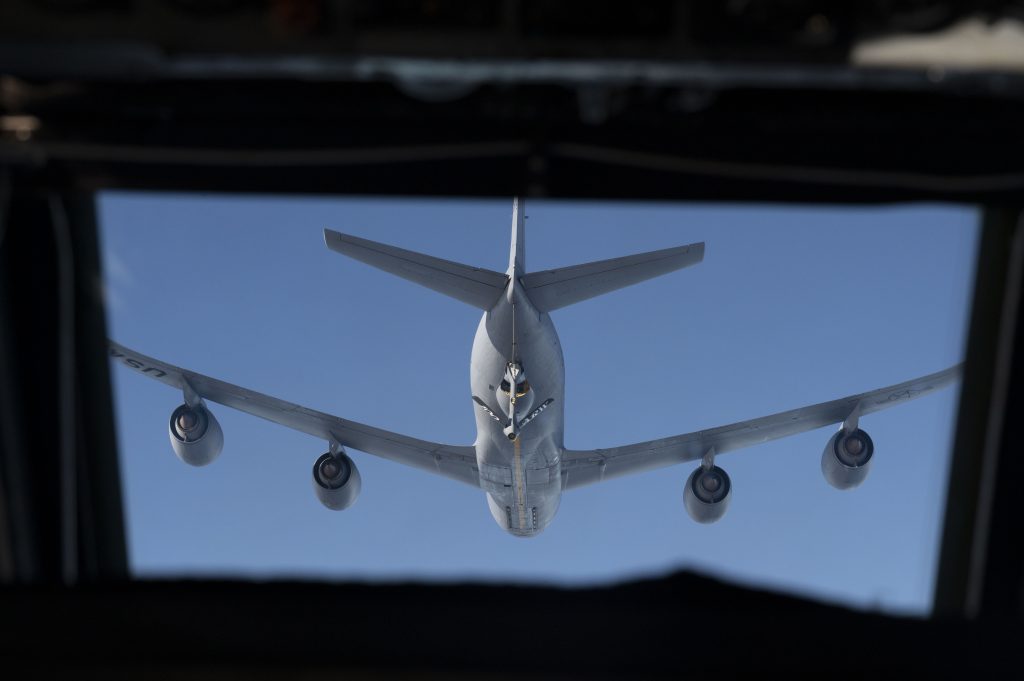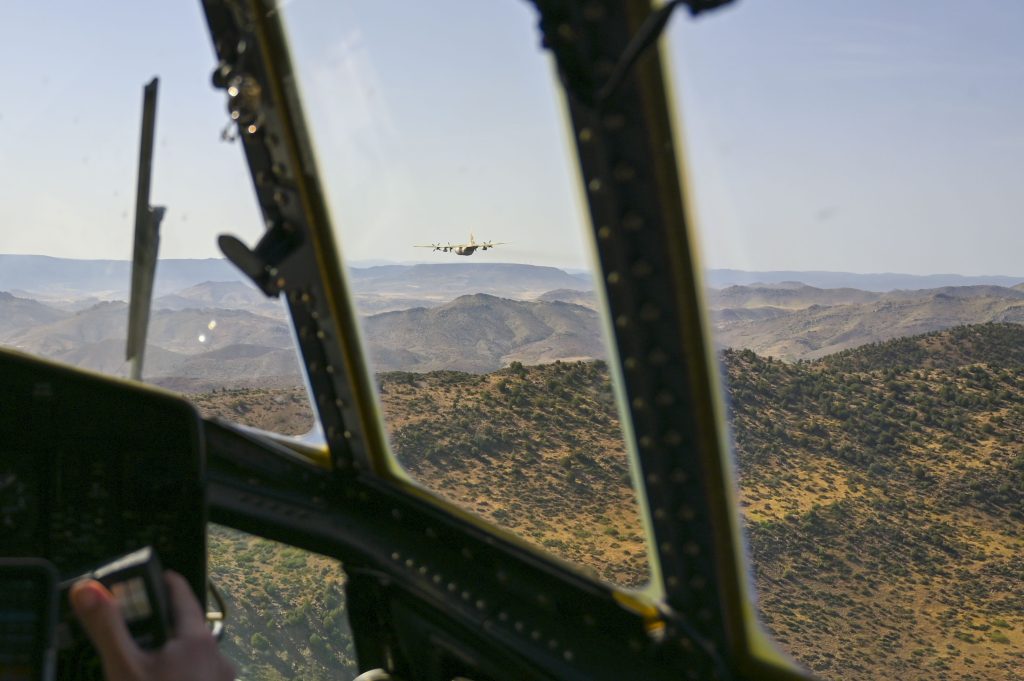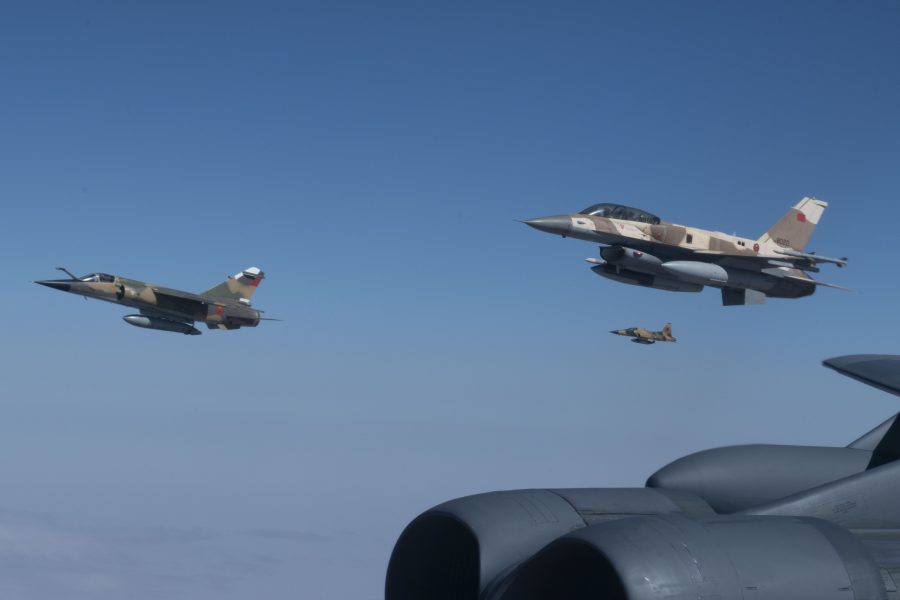Moroccan Royal Air Force fighters escorted a U.S. Air Force B-52H Stratofortress on May 31 to help mark the 20th anniversary of the U.S.’s largest annual exercise in Africa.
U.S. Africa Command’s African Lion featured more than 8,100 participants from 27 nations, running from April 19 to May 31 across Morocco, Ghana, Senegal, and Tunisia.
The U.S. Air Force in particular contributed Airmen from the 302nd Airlift Wing at Peterson Space Force Base, Colo.; the 349th Aeromedical Evacuation Squadron at Travis Air Force Base, Calif.; the 36th Aerial Port Squadron at Joint Base Lewis-McChord, Wash; the 86th Aeromedical Evacuation Squadron at Ramstein Air Base, Germany; the 4th Combat Training Squadron at U.S. Army Garrison Bavaria-Hohenfel Germany; and the 109th Air Control Squadron at Roland R. Wright Air National Guard Base, Utah.
“This exercise is an incredible opportunity for all of us to work shoulder-to-shoulder with our partners as we develop essential aviation capacity and strengthen regional cooperation,” Lt. Col. Bradley Ross, African Lion Air Force element commander, said in a release. “Together, we’re building a team capable of ensuring Africa’s future safety, security and prosperity.”

Along with the B-52—which is currently operating from RAF Fairford, U.K., as part of a bomber task force—the Air Force sent two C-130H Hercules aircraft from the 302nd Airlift Wing, a U.S. Air Forces in Europe and Air Forces Africa (USAFE-AFAFRICA) spokesperson told Air & Space Forces Magazine. The Hercules aircraft conducted a joint forcible entry exercise and cargo drop operations in Morocco, allowing aircrew to airdrop efficiently and deploy personnel to specific locations.
Other U.S. aircraft included the Navy’s P-8A Poseidon and the Utah Army National Guard’s AH-64 Apache helicopters. The helicopters were transported by two C-17 Globemaster III aircraft from the 445th Airlift Wing at Wright-Patterson Air Force Base, Ohio, and the 437th/315th Airlift Wing, Joint Base Charleston, S.C. The Globemasters did not participate in the exercise, the spokesperson added.

During the exercise, a real-life evacuation scenario unfolded as the 86th Aeromedical Evacuation Squadron at Ramstein Air Base swiftly transported a U.S. Army Soldier on a Tunisian C-130J Super Hercules. The squadron evacuated the soldier from El Aouina Air Base, Tunisia, suffering from a gastrointestinal infection with complications. The patient evacuation occurred within 12 hours of notification, with help from TRANSCOM, the Army Southern European Task Force in Africa, and the U.S. and Tunisian embassies.
The large scale exercise is an example of AFRICOM’s “immense convening power,” which fosters interoperability across its African allies, said Air Force Maj. Gen. Kenneth P. Ekman, director of strategy, engagement, and programs of U.S. Africa Command.
“We partner with African militaries by playing the U.S. strikes, which are distinctive,” Ekman said at U.S. Global Leadership Coalition’s Global Impact Forum on June 3. “We build relevant and resilient military capacity to address our shared security interests. Those are backed by education and training programs that put a premium on rule of law, human rights, and civilian control.”
Ekman also described the strategic challenges facing AFRICOM in response to efforts against violent extremist organizations (VEOs).
“I am most concerned about the diminishing U.S. competitive advantage in a multipolar world among increasingly nonaligned partners in Africa,” said Ekman. “This sets the fulcrum for leveraging our AFRICOM means and ways as a posture-limited theater, focused on security cooperation. We’re almost completely pursuing the disruption of select VEOs through partner led U.S.-enabled operations. Al Qaeda and ISIS affiliates drive our focus primarily in East and West Africa, where we had some recent successes in East Africa last week.”
Ekman stressed the command’s need to use its resources to prioritize security cooperation in the face of growing Russian influence through Private Military Companies (PMCs) in Africa. PMCs add a layer of complexity, as they often operate independently or in support of state interests, posing challenges for traditional military and diplomatic efforts.
“For Russia, our challenge involves providing a viable alternative to what they offer, operating alongside Russian forces and PMCs, who pursue separate or related security objectives and then maintaining access and influence despite state capture,” said Ekman. “That’s an area where we’re still trying to figure out how to do it, with an increasingly nonaligned Africa.”
In recent years, Russian diplomacy in Africa has become closely tied to private PMCs, like the Wagner Group. These private mercenary groups offer services to African governments independently, while providing Kremlin with plausible deniability regarding its involvement. Reports have shown their actions often involve human rights abuses, disinformation, and worsened civil conflicts. Experts caution against hiring Russian private military companies in Africa due to potential consequences, including increased violence and military tensions and exacerbated civil-military relations.
